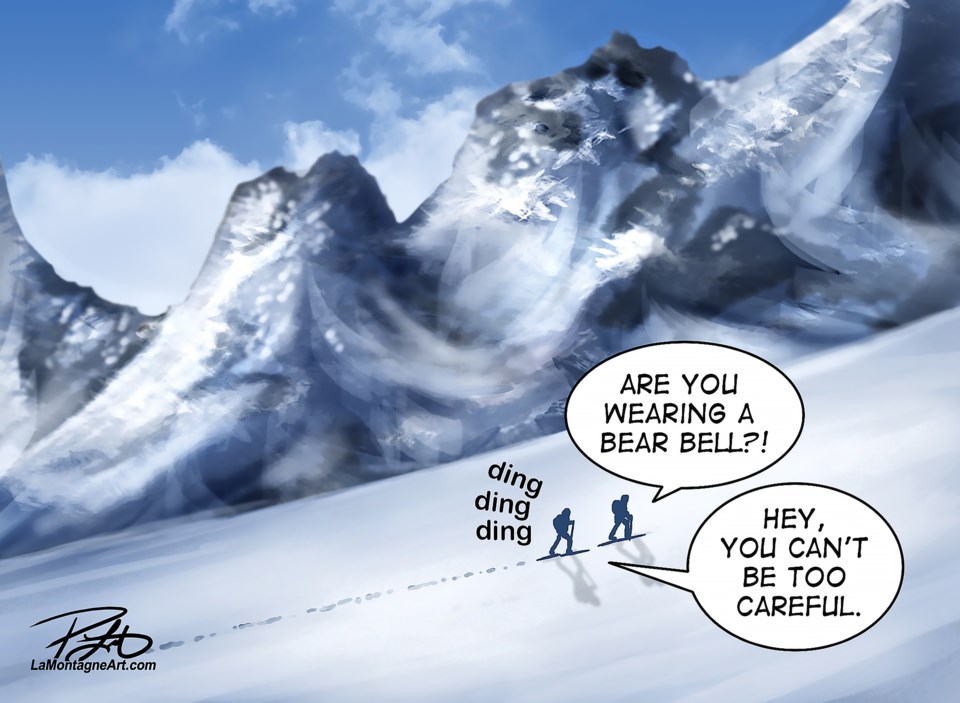Being in the Canadian Rockies is a different beast, especially when winter conditions kick in.
With weather changes that can get dicey in a hurry, driving on roads and highways and/or recreating in a constantly evolving backcountry environment make the Rockies a place to not be taken lightly – experienced or not.
In the Canadian mountains, this can be said for any season; however, as white snow falls and temperatures drop below freezing, a sense of eagerness has returned for many now that we can finally resume doing some of our favourite outdoor activities.
In the midst of excitedly packing vehicles with gear and heading to where the action is, this is the perfect time for an important reminder there are reports to eye over, and programs worth investing in before entering the ever-changing conditions of the mountains.
Being educated about what’s happening out there, and where the fun is, could be the difference between life and death.
On Saturday (Nov. 11), a size 2 avalanche killed an ice climber near Lone Ranger in Kananaskis Country near the area of Burstall Pass.
The deadly avalanche hit a pair of climbers, which buried and killed a 29-year-old man from Squamish, B.C. The other climber was partly buried and survived after digging herself out.
The Outlook offers condolences to the friends, family and those affected.
According to Avalanche Canada, which has danger ratings and forecasts, the wind slab avalanche had developed rapidly above a reactive crust that had formed on Nov. 10. That same area where the young man was killed has a “dangerous avalanche conditions” rating as of Wednesday (Nov. 15).
When tragedies like this happen, the initial feelings flare up about how and why this could have happened. However, learning from disaster is what hopefully many take away with from untimely deaths in the Rockies.
The reality of it is every single year the Outlook reports on mountain recreationalists being killed in the Rockies – in all seasons. Many victims died doing what they loved.
In 2023, there have been 16 fatalities from avalanches in Canada, with the majority taking place in British Columbia.
It’s crucial to anyone venturing into potentially dangerous areas where they play to be up to date with training and safety – experienced or not.
While checking conditions online is one aspect, a bigger piece is knowing what to do when the worst happens. There are several local avalanche safety courses, such as MountainLIFE and Global Alpine, that are highly recommended and offer proper training to beginners figuring it all out and for experienced mountain folk looking to brush up on their skills.
Even a short trip from Calgary to Canmore can offer a very different weather experience in the span of an hour. As snow continues to blanket the Rockies, highways and roads will become sloppy.
When conditions look like you shouldn’t be driving, then there’s a good chance you should run with that instinct and put the car keys down – experienced or not.
Before trips, get informed about road conditions which can be checked on 511 Alberta, and Environment Canada and Alberta Parks for advisories, incident reports, and weather forecasts.
Motorists should be prepared for the worst if involved in an accident or delay in sub-zero temperatures. A vehicle should always be equipped with warm clothing, food, a small shovel, flashlights, and a gas tank with as much fuel in it as possible.
The chilly season has arrived in the Rockies, which makes it a magical time of the year. As some of the best outdoor activities have returned, it's important to think ahead, be prepared and, of course, have a great winter.




